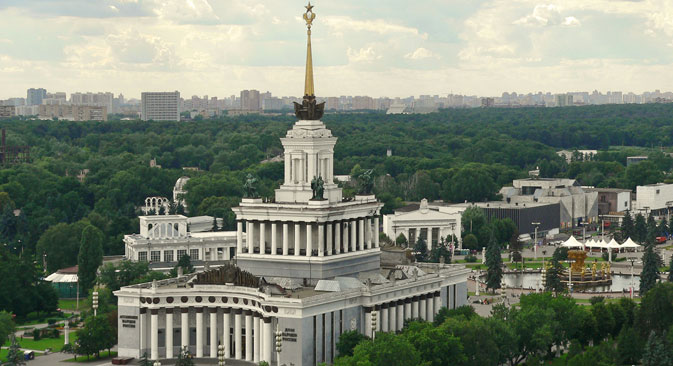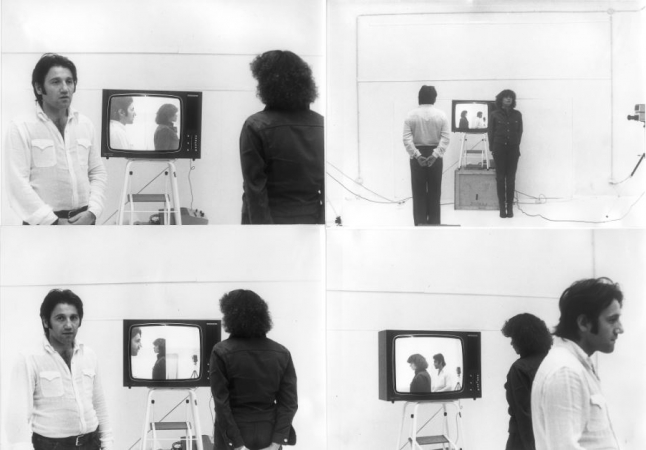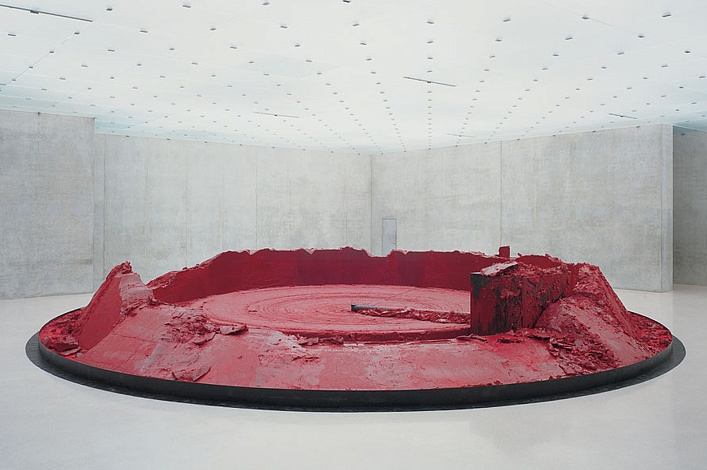
Pavilion No. 1, VDNKh
Until Oct. 1
Pavilion No.1, VDNKh. Source: Courtesy of the Moscow Biennale of Contemporary Art
All works of art at this year’s event will be created onsite in just 10 days. The main exhibits are not sculptures and paintings, but discussions and performances united by the theme of relations between the peoples of Eurasia.
The Biennale is being curated by Bart De Baere, director of Antwerp’s MUHKA, Nicolaus Schafhausen, the director of Kunsthalle Wien, and Defne Ayas, director of the Witte de With Center for Contemporary Art in Rotterdam.
After the 10-day marathon, art objects and videos of the performances will be displayed at the exhibition. The performers include artists like Saâdane Afif, Andrei Kuzkin, Taus Makhacheva and even the founder of the portal e-flux, Anton Vidokle.
Multimedia Art Museum
Until Oct. 25

AES + F. Source: Courtesy of the Moscow Biennale of Contemporary Art
Every new work by the four-member group AES + F (Tatiana Arzamasova, Lev Yevzovich, Yevgeny Svyatsky and Vladimir Fridkes), like the premiere of a Hollywood blockbuster, astonishes with its scale.
A dynamic plot, huge crowds, dripping with special effects – all this has long distinguished the films of the group, which works at the intersection of video, film and photography.
This time, the group filmed scenes from medieval engravings in the genre of Inverso Mundus ("World Upside Down"), depicting scenes such as the pig killing the butcher, the child punishing the teacher, and the beggar giving money to the rich.
In the interpretation of AES + F, apocalypse looks glamorous and extremely attractive, but at the same time, the work retains critical pathos in relation to the "world upside down."
Moscow Museum of Modern Art
Until Nov. 1

Peter Weibel. Source: Courtesy of the Moscow Biennale of Contemporary Art
Curator and art theorist Professor Weibel will appear in Moscow as a pioneer of media art.
However, the art of Weibel has never been a purely technological experiment. Both in the 1970s, with the decade’s enthusiasm for video, and in the 1990s, which opened up digital technology, he always remained a critic of society, earning the honorary title of a media rebel.
In addition to videos and video installations, the exhibition will show the documentation of his actions. The best-known was made in the heyday of Viennese Actionism when Weibel was walked on a leash through the streets of Vienna, shocking the bourgeoisie, by beauty Valie Export, now an icon of feminist art.
Jewish Museum and Tolerance Center
Until Jan. 17, 2016

Anish Kapoor. Source: Courtesy of the Moscow Biennale of Contemporary Art
This British sculptor of Indian origin is an international superstar of contemporary art. He is the recipient of numerous honors and awards, the winner of the UK's prestigious Turner Prize, a participant of the Venice Biennale – in short, a big artist who prefers large forms.
The installation My Red Homeland is a huge 12-meter circle of wax on which a steel arm moves, removing the layers of wax so that the viewer should physically feel the materiality of pain, the torn flesh of the earth, soaked with blood. In total, four sculptures by the artist have been brought to the museum.
Garage Museum of Contemporary Art
Until Feb. 7, 2016

Louise Bourgeois. Source: Courtesy of the Moscow Biennale of Contemporary Art
Louise Bourgeois is one of the most enigmatic artists of the 20th century. A total of 80 works by the French-American artist have arrived in Moscow from Munich's Haus der Kunst art museum.
The Moscow retrospective focused on one of Bourgeois' key themes – cells. She considered the cell a symbol of the pain and psychological trauma she received in her childhood that became the driving force behind her art.
Languishing in these toy dungeons are the stumps of body parts, dolls, guillotines, mirrors – in a word, the whole horrible baggage of the author's subconscious.
In the courtyard of Garage is the artist’s cult sculpture Maman – a giant steel female spider, which embodies the caring motherly essence.
In the hangar, a huge mirror turns, reflecting the title of the work: Has the Day Invaded the Night or Has the Night Invaded the Day? – another mystery by Bourgeois that addresses the viewer's subconscious.
All rights reserved by Rossiyskaya Gazeta.
Subscribe
to our newsletter!
Get the week's best stories straight to your inbox